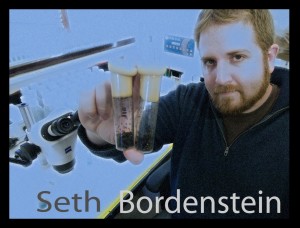 Two opposing theories of evolution have emerged into a new impasse – “survival of the fittest” versus symbiosis. As Charles Darwin explained in The Origin of Species (1859), evolution results from competition between species.
Two opposing theories of evolution have emerged into a new impasse – “survival of the fittest” versus symbiosis. As Charles Darwin explained in The Origin of Species (1859), evolution results from competition between species.
On the opposing side, evolution is thought to result from some altruistic cooperation between the species − a process of symbiosis. Darwin proposed that evolution stems from “accumulating slight, successive” changes during the “struggle for life” − a process he called natural selection.
Poet Alfred Lord Tennyson, born the same year as Darwin, captured the essence of this struggle for life in the now-infamous phrase—“nature red in tooth and claw.”
Symbiosis
More recently, Darwin’s bloody view of nature and evolution is being increasingly rejected by many in favor of a more peaceful symbiosis approach spearheaded by Carl Sagan’s wife – National Medal of Science award winner, Lynn Margulis. Recent studies give support to this new theory of evolution.
In a study published in Science, Seth Bordenstein and Rob Brucker, biologists at Vanderbilt University, studying related but incompatible species of wasps in the laboratory, Nasonia giraulti or N. longicornis with their more distant relative N. vitripennis, tips the impasse in favor of symbiosis.
Initially, multiple attempts at hybridization were a failure; the hybridized wasps quickly died. Nasonia wasps have recently emerged as a model of symbiosis in the study of evolution. When the wasps were treated with antibiotics, however, many of the hydridized wasps survived. As science writer Carrie Arnold for the Quanta Magazine published by the Simon Foundation notes,
“By stripping off the wasps’ microbiomes — the microbial community inhabiting the insects — Bordenstein and Brucker had brought a totally new hybrid wasp to life.”
This symbiosis model of evolution is beginning to gain traction within the evolution industry. However, “This idea contrasts sharply with the traditional picture of evolution,” Arnold notes, “in which new species emerge either from geological isolation or from a relentless struggle for food and mates”−the classic Darwinism model of evolution at an impasse.
This work is changing our idea of what a species is and how it might form,” said Nicole Webster, a marine microbiologist at the Australian Institute of Marine Science in an interview by Arnold. The symbiosis model began in the mid-1990s, as some scientists began to define a species not just as a single organism but as the organism plus its biosphere−a microsphere in the case of wasps.
Why the antibiotics actually work to increase the survival of hybridized wasps is not known. The emerging popular theory, according to Bordenstein, centers on immune system regulation.
What Arnold was led to believe is that “when a wasp, such as a hybrid, plays host to the wrong microbes, the wasp’s immune system may attack and kill itself instead of foreign pathogens… If this work holds up, Bordenstein may have added a new dimension to how scientists think about evolution.”
“It’s now very clear that symbiosis is the rule and not the exception and that it plays a much more important role in evolution than anyone thought,” Bordenstein said.
Symbiosis, as a driving force in evolution, was first proposed by Peter Kropotkin, a Russian naturalist. In his 1902 book “Mutual Aid: A Factor of Evolution,” Kropotkin writes, “There is an immense amount of warfare and extermination going on amidst various species … there is, at the same time, as much, or perhaps even more, of mutual support, mutual aid, and mutual defense. … Sociability is as much a law of nature as mutual struggle.”
Not until then did a young biologist of Boston University, Lynn Margulis provided develop the theory that the mitochondria, an intracellular metabolic machine, might have originated from symbiotic bacteria. “Margulis’ idea was met with skepticism.” Arnold notes, “It took 20 years of intense debate for scientists to somewhat reluctantly accept it, and they believed it to be a freak occurrence.”
Evolution at an Impasse
Many evolutionary biologists are reluctant to abandon Darwinism. “People still think of evolution as the ‘survival of the fittest,’” Bradford Harris, a doctoral candidate in the history of science at Stanford University said in an interview with Arnold. “It’s a nice, convenient one-liner to explain a very complicated phenomenon.”
Stepping backing, Brucker explained to Arnold: “These experiments can’t tell us whether the microbes were actually causing speciation.”
Joshua Gibson, an evolutionary biologist at Purdue University in West Lafayette, Indiana, and a Nasonia expert said –
“It’s not clear whether the microbiome led to the genetic changes or whether the genetic changes caused the microbiome to shift.”
The symbiosis theory, although more humane than Darwinism, is still controversial. “The jury is still out,” explained Angela Douglas, an entomologist and microbiologist at Cornell University to Arnold. “Clearly, microbes are an integral part of what it means to be an animal, but researchers need to repeat these experiments in more ecologically relevant conditions.”
What troubles Jerry Coyne, a strict Darwinist at the University of Chicago, is the lack of scientific evidence. “There are no studies as of yet that prove definitively that the microbiome causes speciation,” Coyne said to Arnold –
“It’s theoretically possible, but we don’t know for sure yet.”
Scientific evidence has yet to prove that Coyne’s theory “causes speciation.” In the words of Margulis, “The real disagreement about what the neo-Darwinist tout, for which there is very little evidence, if any, is that random mutations accumulate and when they accumulate enough, new species originate.”
As long as the survival of the fittest versus symbiosis debate continues, along with natural selection, the theory of biological evolution continues only as a belief system.
Genesis
Accumulating evidence continues to be compatible with the Genesis account written by Moses.
Refer to the Glossary for the definition of terms and to Understanding Evolution to gain insights into understanding evolution.

